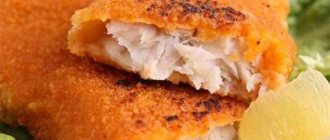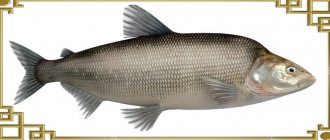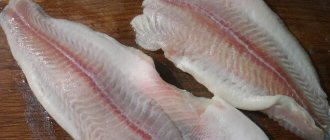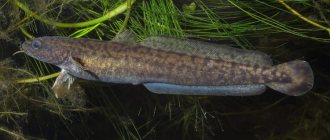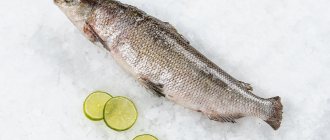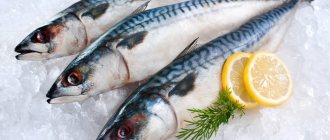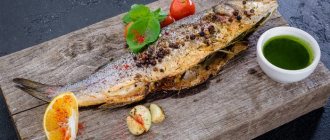Fish plays a huge role in people's lives, because it is a rich source of proteins and other useful substances. It happens that different species are very similar to each other, so it is very important to understand their differences and not get into a difficult situation. Why difficult? It's simple - each fish requires its own type of preparation and storage, and the taste is slightly, but different. Nelma and muksun - we will now look at the differences between these two representatives.
These species belong to the whitefish family and are very similar in appearance. Both fish are quite large.
Nelma is the most massive fish of its kind, can reach a height of up to one and a half meters and weigh up to 50-55 kilograms. But such species are extremely rare, only in the depths of the aquatic environment. And the average weight of this fish is from 5 to 15 kilograms.
- The nelma has fairly large silver scales and very small caviar;
- The belly and sides of the fish have a light white tint with a silvery tint;
- The body is long with even curves.
- As a fairly rare fish, it has an adipose fin at the top of the body.
- The mouth is elongated and quite large, and inside the mouth there are many sharp fangs.
- Nelma differs from the rest of its species in that it does not have spots on its body. It is extremely rare for her to develop outgrowths or other visible irregularities on her body.
Hatching of eggs occurs in early autumn on soft ground. The eggs are obtained in an approximate quantity of 120-140 thousand. And having established themselves, they develop throughout the cold weather (until the end of winter). Nelma grows and gains weight very rapidly. Within a year it can be quite large and reach a weight of 8 kilograms.
Muksun is a fish from the same species of whitefish. Compared to nelma, it can reach a maximum weight of 14 kilograms. And the average weight is small - 1-2 kg.
- The body of the fish is long, pressed on the sides;
- The differences between these two fish are that the body of the muksun behind the head is very raised;
- The color comes in bright tints: dark on top and lighter closer to the belly. It also has a silver tint.
Unlike nelma, muksun does not stay in place during spawning and moves. It takes a very long time to travel from the Arctic Ocean to the Ob, Yenisei and other rivers. When spawning, the fish prefers to swim with the current and lay eggs in the mouths and a little further downstream.
It is also worth noting that the rules must be followed. Fishing for these and many fish is not permitted in some parts of Siberia.
Source: xn--80aaccob0dxacd1jyb.xn--p1ai
Description of the species
The whitefish genus (Coregonus) contains more than 60 taxa. They all prefer running cold water, so they avoid areas with long hot summers. An exception is the European vendace (Kilets, ripus), which, due to its small size (12-20 cm), is able to cope with significant warming of the reservoir.
Northern muksun fish (Coregonus muksun) is a typical cold-loving representative of taiga rivers. The closest relatives are omul, whitefish (cheek), various whitefish, tugun, peled (cheese). Leads a freshwater lifestyle, but tolerates lightly salted water well. Regularly makes long feeding migrations to desalinated bays. The most intense movement occurs during strong spring floods, caused by the accelerated melting of large amounts of snow.
The species is characterized by significant dimensions. Regular catches include young specimens 30-40 cm long and weighing 1.5-2.0 kg. But often you come across trophy adult specimens weighing 5-8 kg. The largest muksun weighed 13 kg with a body length of 90 cm. In the size hierarchy of the salmon family, the whitefish genus occupies an intermediate position between the constituent predatory taxa, which weigh 20-80 kg (taimen, chinook salmon, nelma) and medium-sized grayling subspecies with a maximum weight of 2. 5-2.7 kg.
Origin of the species and description
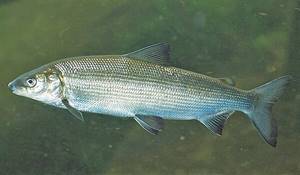
Photo: Muksun
Muksun is a fish from the whitefish genus, belonging to the salmon family and the whitefish subfamily. There are more than 60 species of fish in the whitefish genus, almost all of them prefer flowing reservoirs with cold water, avoiding areas with a hot climate and a long summer season. Muksun is called northern whitefish, it can also be called cold-loving.
Among the closest relatives of the muksun are:
- Baikal omul;
- cheekura (chira);
- other whitefish;
- tuguna;
- peled
Muksun is classified as a fresh water inhabitant, but can also tolerate slightly salted water. With periodic regularity, fish migrate to desalinated bays. Its course gains intensity in the spring during floods, when huge snow masses begin to rapidly melt.
Video: Muksun
This whitefish species is large in size. Mature individuals can reach a weight of 5 to 8 kg, but such specimens can be called trophy; they are rarely found. Usually, young animals predominate, weighing from one and a half to two kilograms and length from 30 to 40 cm. Judging by the dimensions of all salmon, the muksun can be placed in an intermediate place between such large fish predators as taimen, nelma, chinook salmon (from 20 to 80 kg) and not very large varieties of grayling (from 2.5 to 3 kg).
Interesting fact: The largest muksun caught had a mass of 13 kg and a body length of 90 cm.
What does muksun fish look like?
The northern whitefish has an elongated, slightly laterally compressed body with a raised caudal peduncle. Other exterior features of the species include:
- presence of an adipose fin;
- head extended forward;
- silver-gray body color and dark blue or ash back with an expressive hump in adults;
- pointed snout with a lower position of the mouth;
- weak scales of medium size (87-107 pieces in the lateral line);
- enlarged upper jaw (2-3 times the width);
- light pressed abdomen;
- increased number of gill rakers (up to 60-65).
Muksun has no biological subspecies. There are numerous anadromous forms and several local populations, differing in nuances of color, average size, and timing of puberty (Kolyma, Lensk, Indigirsk). The lake-river salmon hybrid, the whitefish, which has common exterior features and identical habits, is often mistakenly classified as a taxon.
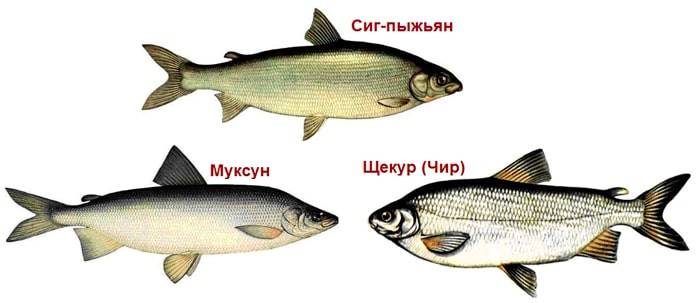
Invariable difficulties for inexperienced fishermen and buyers are the search for differences between muksun and shekur (chir) due to their amazing external similarity, especially when there is no possibility of simultaneous comparison of representatives of different species. For identification, it is necessary to use unique biological characteristics, excluding the color of the body and back, which can vary depending on the specific feeding and habitat (see table).
The most correct way to distinguish between whitefish “twins” is to compare the width and length of the body, visually assess the number of scales in the lateral line and the ease of scraping them off with a fingernail. The last condition is almost impossible to fulfill if you have Cheer in your hands.
How to choose muksun in the store
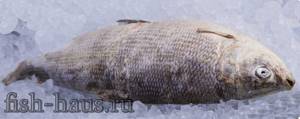
When buying muksun in a store, try to follow the tips below so as not to purchase a low-quality product:
- The muksun's gills should be red;
- eyes - bulging and light;
- if there is no head, then there is always the possibility that the fish was stored incorrectly, and unscrupulous sellers hastened to get rid of unnecessary evidence of this;
- the surface of the carcass must be smooth and without obvious damage;
- if the fish is frozen, then the ice shell covering its body should not be thicker than two millimeters;
- When buying caviar, make sure that the eggs are not particularly cloudy.
How to choose fresh frozen muksun
How to choose? Give preference to fresh or commercially frozen muksun. Do not buy salted (it contains a lot of salt) and smoked (it contains carcinogens - substances that cause cancer) fish.
Distribution and habitats
The northern muksun fish lives over a vast territory from the Yamalo-Nenets Autonomous Okrug (Kara River) to Yakutia and the Magadan Region (Kolyma River). The species is most widespread in the basins of the Yenisei, Lena, Ob, Indigirka, Anabar, Irtysh, Pyasina rivers, in lakes Taimyr, Lama, Glubokoe, on the coast of the Laptev Sea, East Siberian and Kara Seas. More recently, fish massively populated the right tributary of the Ob, the river. Tom, but due to increased poaching, it has significantly reduced its population and has become quite rare, giving way to smaller representatives of the carp family - minnow, chebak and crucian carp.
Outside of Russia, northern whitefish live in cold lake-river systems of the USA and Canada. The local name for the species is whitefish, which is defined by its light coloration.
Lifestyle and nutrition
In its family, muksun is a long-liver, often reaching an age of 20 years or more. All this time, intensive feeding occurs, including in winter and during the spawning period. Cool flowing areas with a depth of 3-5 meters, which are characterized by temperature stability, clean and oxygenated water, and a sufficient number of shelters, are selected as parking and feeding sites.
The feeding process is associated with a constant search for various bottom organisms, larvae, leeches, aquatic insects, mollusks, and crustaceans. A significant part of the diet consists of zooplankton and eggs of other representatives of ichthyofauna. Large individuals often prey on young fish, including salmon species. During the period of mass emergence of hymenoptera and beetles, fish rise to the upper layers in search of soft beetles, beetles, honeydews, ground beetles, fireflies, chironomids and night caddis moths.
Features of reproduction
Due to the long life cycle, puberty occurs late. The earliest is at 6-7 years of age, but usually at 8-12 years of age. This biological feature complicates the normal restoration of the population in a situation with intensive and uncontrolled fishing of large fish.
In 2014, strict restrictions on commercial catch were introduced in most regions where the species lives. Also, the northern whitefish is a prime candidate for a place in the Red Book of the Russian Federation.
The first wave of the spawning run begins in July-August and is accompanied by a massive return of the semi-anadromous form to the mouths of their native rivers (homing) with further movement upstream to search for suitable spawning sites. A little later, preparation for procreation begins in residential populations that did not go out to feed at sea and do not require long movements along the riverbed.
The main factor in the start of muksun spawning is the water temperature, which must drop to +4-8°C. If the autumn is too warm, the fish that enter the rivers begin to actively feed in order to wait for favorable climatic conditions without harm to the body. As a representative of the Atlantic subfamily of salmon, the northern whitefish does not die after spawning and is capable of making 3-6 spawning migrations during its life. To increase the chances of survival of the fry, eggs are thrown in portions, with significant time pauses. Often the process drags on throughout the entire autumn-winter period. After this, the fish returns back to the sea or to deep places of permanent residence in a river or lake.
Spawning grounds are shallow flowing areas with an overgrown bottom or a coating of pebbles, small pebbles, and coarse sand. The average fertility of a large female is 25-40 thousand eggs, which are yellow in color and have a sticky top layer for quick and reliable attachment to a solid substrate.
The usual duration of the incubation period is 180-200 days. The mass release of fry occurs at the end of March, April and beginning of May. The small muksun has a characteristic tiger color for camouflage and immediately hides in the coastal vegetation, where it switches to intensive feeding on zooplankton and the smallest bottom organisms. Having reached a length of 3-5 cm, it begins to slide downstream to the first standing reservoir, where the main feeding occurs.
Fishing for muksun
Spinning or fly fishing tackle is used. All whitefish have a small mouth, so small spoons (spinning spoons, spinners) and ultra-light silicone baits that imitate crustaceans, beetles, worms and fish are optimal. When choosing a color, it is better to give preference to bright or mixed tones.
The line should be as invisible as possible. As a standard, thin braid is used, which creates less windage in the current, together with a fast spinning reel and a microjigging rod with 2-3 grams of dough. Fly fishing for muksun requires colorful flies with hooks No. 2-4. Slow-step retrieves directed along or diagonally to the shore line work best.
In winter, a float tackle with a jig “devil”, “drop”, “ant” or a special “whitefish” with two hooks on the edges is used. The bait is a large bloodworm. To attach the fish, a feeding post is used - every few minutes a pinch of chopped bloodworms, worms or maggots is thrown into the hole.
How to catch muksun
Muksun is a predatory fish, which means that mainly artificial baits are used to catch it - spinners, wobblers, silicone, etc. Some fishermen make their own baits using bright red pieces of plastic with multi-colored threads. A variety of flies used in fly fishing have also proven themselves well. Many experienced fishermen advise soaking baits with anise drops, the smell of which this fish really respects. Among natural baits, it is better to use food that is familiar to muksun - amphipod crustaceans, aquatic larvae, live bait, insects, etc.
How to get the delicacy muksun
Nutritional properties
Northern whitefish meat is not susceptible to infection by parasitic flatworms, therefore it is widely used for preparing raw dishes - stroganina, Xe appetizer, rolls, sashimi, sushi, various salads, etc. Particularly tasty is the sugudai cut, which involves marinating the fillet for 40-60 minutes in lemon juice with the addition of pepper, salt and onion rings.
The calorie content of muksun is moderate 88 kcal per 100 g. Due to its complete digestibility, zero glycemic index and insignificant mineralization, the fish is recommended by experts as a high-quality and important element of dietary nutrition for adults and children.
In addition to a high level of healthy proteins, the product contains:
- vitamin PP (nicotinic acid + nicotinamide) – 2.9 mg;
- fluorine (430 mcg), chlorine (165 mg), nickel (6 mcg);
- molybdenum (4 mcg);
- zinc (0.7 mg), sulfur (175 mcg).
One serving of a fish dish provides the body with the daily requirement of chromium, which is involved in the process of carbohydrate synthesis, maintaining normal glucose levels, eliminating toxins, strengthening the skeleton and increasing physical endurance.
Due to its soft-dense structure and low content of intermuscular bones, whitefish meat tolerates various heat treatments, including frying, boiling, baking, grilling and steaming. The maximum benefit comes from raw, pickled or lightly salted muksun.
Source: Poklev.com
These two northern Siberian fish are deservedly considered delicacies, especially in the European part of Russia. They are both used to prepare a variety of dishes and snacks, have a delicate taste characteristic of salmon breeds, and high nutritional value. Those who encounter them for the first time are naturally concerned with the question: what is the difference between nelma and muksun in culinary terms? Despite the fact that both fish belong to the same genus of whitefish, there are significant differences between them.
Dimensions.
Nelma is the largest breed of whitefish, its maximum length reaches one and a half meters, and its weight is 50 kg. The average weight varies between 5-10 kg. Muksun is much smaller: its longest recorded length was 0.75 m, and its weight was 13 kg. On average, it weighs no more than 2 kg.
Appearance.
Nelma and muksun are easy to distinguish externally. In addition to its larger size, nelma has an elongated and smooth symmetrical body shape, with a pointed head. The muksun, on the other hand, has a distinctive hump behind its head, and its body is shorter and denser. The difference between these fish is clearly visible in the photo:
Calorie content.
Muksun is a relatively “dietary” fish - the number of calories in 100 g of meat is 121 kcal. Nelma significantly exceeds it in this indicator; its energy value is on average 160 kcal. However, the calorie content of a particular fish is determined by many factors - habitat, diet, time of catch, etc.
The nutritional value.
Both fish are very nutritious, their meat is almost completely digestible (up to 98%). In terms of protein content, nelma and muksun are practically the same - 19.4 and 18.5 g per 100 g of weight, respectively. The difference in fat content is more significant: for the first it is 9.2 g, for the second - 5.2 g. This explains the higher energy value of nelma. Fish of both breeds contain a large amount of vitamins, beneficial elements (zinc, selenium, phosphorus, magnesium, etc.), polyunsaturated fatty acids.
Taste qualities.
Muksun has a specific aroma of fresh cucumber; it has very tender and tasty meat. Nelma has a more neutral taste and smell, but due to its higher fat content, it is perceived as rich and at the same time as if it melts in the mouth. The peculiarity of both fish is the absence of parasites and their eggs in the meat, which is why such delicacies as stroganina, as well as sushi, are made from them. It is better to fry them in their own fat on a grill or grill.
What is tastier - nelma or muksun?
There is no clear answer to this question; it lies purely in the plane of individual preferences. Having found out how both fish differ from each other, you can fully enjoy the culinary merits of each of them.
Source: SibiFood.ru
CARIBOU
09-09-2013 14:08
44. Areas prohibited for the extraction (catch) of aquatic biological resources.
44.1. Water bodies of fishery importance in the Yenisei River basin.
It is prohibited to harvest (catch) all types of aquatic biological resources:
a) in tributaries of the Yenisei River of all orders south of the mouth of the Angara River (Strelka village), tributaries of the Angara River and hydroelectric power station reservoirs;
b) in the delta of the Yenisei River from the alignment of the Budantsev - Nasonovsky islands - the Yakovlevka River to the alignment of the mouth of the Yangoda-Yakha River - Cape Gostiny;
c) in the Yenisei Bay from the alignment of the Sopochnaya River - Cape Oshmarina to the alignment of Cape Peschany - the northern end of Shirokaya Bay;
d) in the channels of the Yenisei River delta: Egorovskaya, Nasonovskaya, Vankina, Gryaznaya, Kabatskaya, Maly Yenisei (from the northern part of the delta to Cape Muksuninsky).
44.2. Water bodies of fishery importance in the Khantaika River basin, including the Ust-Khantayskoe reservoir.
It is prohibited to harvest (catch) all types of aquatic biological resources:
a) in the bays of rivers flowing into the Ust-Khantay reservoir: Sigovaya, Tukulanda, Mogen, Kulyumbe, Gorbiachin, Brus, Akit, Mogokta for 10 km from the variable backwater;
b) in the tributaries of Lake Khantaiskoye: Nekanda, Muchumakit, Irbo, Nere (Nalednaya), Kutaramakan, Mogady, Golochanda, Khitykit, Khakancha.
44.3. Kureyskoye, Boguchanskoye, Krasnoyarskoye, Sayano-Shushenskoye and Mainskoye reservoirs with their flowing rivers.
It is prohibited to harvest (catch) all types of aquatic biological resources:
a) in the Kureyskoye Reservoir:
on the upper section of the Kureyka River Bay with a length of 10 km from variable backwater;
in Lake Dyupkun and the Kureyka River between the lake and the reservoir.
b) in the Krasnoyarsk reservoir:
in the lower reaches of the reservoir above the road bridge over the Yenisei River near the city of Divnogorsk.
c) in the Sayano-Shushenskoye and Mainskoye reservoirs:
in the lower reaches of reservoirs at a distance of less than 0.5 km from the dams.
44.4. Water bodies of fishery importance in the Pyasina River basin.
It is prohibited to harvest (catch) all types of aquatic biological resources:
a) in the Pyasina River from its source from Lake Pyasino (including the water area in front of the source, limited from the south by the line Cape Oruzhilo - Chaichy Island - Cape on the eastern shore of the lake) to the mouth of the Rybnaya River (12 km above the mouth of the Korennaya River, the right tributary of the Pyasina River) ;
b) in lakes Lama, Melkoe, Glubokoe, Kapchuk, Gudke, Sobachye and Nakomyaken with their tributaries;
c) in the rivers Norilka, Rybnaya and their tributaries;
d) in the Agapa River from the mouth upstream to the mouth of the Yangoda River;
e) in the delta of the Pyasina River and in the Pyasinsky Bay from Cape Slutsky to the Cape Zveroboy - Cape Yuzhny alignment (to the northeast of Cape Zveroboy).
44.5. Water bodies of fishery importance in the Taimyr River basin.
It is prohibited to harvest (catch) all types of aquatic biological resources:
a) in the rivers Upper Taimyr, Lower Taimyr (including Lake Engelhardt) with their tributaries, Taimyr Bay to the Cape Wrangel - Cape Oscar alignment;
b) in the Bikada and Severnaya rivers;
c) in the western part of Lake Taimyr, limited in the east by the Cape Andrianova alignment (northeastern cape of the Boot Peninsula) - southeastern cape of Expectation Bay.
44.6. Water bodies of fishery importance in the river basins of the Kara and Laptev seas.
It is prohibited to harvest (catch) all types of aquatic biological resources:
a) in the rivers Khutuda-Bige, Lenivaya, Leningradskaya and their bays;
b) in Minina Bay.
44.7. Water bodies of fishery importance in the Ob River basin.
It is prohibited to harvest (catch) all types of aquatic biological resources:
in the rivers Black Iyus, White Iyus, Kemchug and their tributaries.
45. Prohibited periods (periods) of extraction (catch) of aquatic biological resources.
45.1. Water bodies of fishery importance in the Yenisei River basin.
It is prohibited to harvest (catch):
45.1.1. all types of aquatic biological resources:
a) from July 25 until freeze-up - in the Leontyevskaya channel of the Yenisei River (from the mouth of the Laphaya River to the mouth of the Pastukhovskaya River);
b) from the melting of ice to October 31 - in the Yenisei River from the mouth of the Sym River to the mouth of the Lebedevka River;
c) from May 1 to June 30 - in all lakes of the Angara and Podkamennaya Tunguska river basins;
d) from April 20 to June 20 - in the Yenisei, Angara rivers and lakes of their basins south of the mouth of the Angara River;
45.1.2. salmon and whitefish:
a) from September 10 to November 30 - in lakes Makovskoye, Sovetskie (Turukhan River basin);
b) from September 15 to November 30 - in the lakes of the Lower Tunguska River basin;
45.1.3. whitefish species:
from September 1 to December 15 - in Lake Munduyskoye and its tributaries;
45.1.4. muksuna:
from March 1 to September 30 - in the Yenisei River below the village of Ust-Port;
45.1.5. whitefish:
a) from September 1 to November 15 - in the Yenisei River with tributaries from the dam of the Krasnoyarsk Hydroelectric Power Station to the mouth of the Podkamennaya Tunguska River;
Source: guns.allzip.org
Distinctive features
The rich salmon family contains many valuable species of fish. One of them is muksun, which belongs to the whitefish genus and is valued most among its relatives.
The fish has a spindle-shaped appearance: the body is elongated, with flat sides. The body color is heterogeneous: the back is darker, the sides have silvery tints, and the belly is the lightest part.
The tail and head are slightly raised; in adults, the hump is clearly visible. The head has a blunt shape, the mouth is located at the bottom, equipped with a protruding lower jaw. The average weight of a valuable representative of whitefish ranges from 1 to 2 kg. Individuals weighing 3-4 kg are considered large, and some specimens can grow up to 12 kg. The average body length is 75 cm. Life span ranges from 16 to 25 years.
The diet of muksun is varied, but seasonal. In warm seasons, valuable waterfowl feed on mollusks, underwater midges, fry, larvae, eggs and crustaceans, which are abundant on the coastal bottom. A specific oral apparatus helps the fish lift food from the bottom. In winter, when there is a shortage of large crustaceans, small but nutritious zooplankton is used as food. The fish filters such microscopic food through its gills.
The ichthyofauna of northern waters is proud of such representatives as whitefish, nelma and muksun. All these unique and valuable breeds are distinguished by tender, fatty meat and amazing taste. They belong to the same families and genera, so they are similar in appearance. Muksun and nelma differ in size: nelma is the largest relative of whitefish, reaching a length of up to 1.5 m. In muksun, the body rises sharply above the head, and in nelma, the head more smoothly turns into the carcass.
Like many northern inhabitants, muksun has a lot of fat. But this fat is very healthy and easily digestible. The meat of the whitefish includes many beneficial amino acids, unsaturated fats and microelements. The delicacy contains bromine, copper, zinc, chromium, molybdenum, nickel, fluorine, vitamin PP and arachidonic acid. Surprisingly, this fish has a delicate aroma of fresh cucumber. This unusual smell is due to the presence of specific proteins.
Whitefish meat includes many beneficial amino acids, unsaturated fats and microelements
The disadvantage of gourmet fish is that it is susceptible to infection by parasites. If heat treatment is poor, worm eggs can enter the human body. To avoid this, it is recommended that fish meat be thoroughly processed at low or high temperatures before consumption. Pies with humpback whitefish are delicious, as well as cutlets, fish soup and balyks made from it. It is not recommended to dry meat, much less marinate it.
Muksun fish description
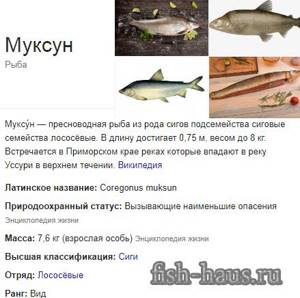
Muksun fish belongs to the whitefish genus, which, in turn, is part of the large salmon family. Muksun loves cold water, which is why it is found in such reservoirs as:
- rivers - Yenisei, Irtysh, Ob, Lena;
- Lake Taimyr;
- slightly saline bays of the Arctic Ocean.
Muksun is a freshwater fish, and it doesn’t particularly like to swim into the ocean. The only exception is a short period in early spring, when rapid flows of meltwater from large rivers dilute the coastal salt water, and the muksun goes to the open ocean in search of food. This is interesting: How to fish in Lake Baikal
Muksun has an elongated body, shaped like a spindle with flat sides. The color of its body is heterogeneous - a dark back, silvery sides and a lighter belly. Adults have a small hump on their back, and the lower jaw protrudes slightly forward. The lifespan of a muksun is about twenty years. Rare specimens manage to reach twenty-five under particularly favorable conditions.
Spawning of this fish begins in mid-autumn and ends at the beginning of winter, when the water cools to 3-5 degrees. The muksun reaches sexual maturity when it is ten to thirteen years old. The number of eggs that one female is capable of spawning is about fifty thousand at a time.
Muksun habitats
Muksun is a freshwater fish of the north. Although it lives in the ocean, it does not swim far from the shore. The love for unsalted water determines those places where tasty fish are found. It lives in the Arctic Ocean, sticking to desalinated areas near the confluence of rivers. Selects the largest Siberian rivers: Lena, Yenisei, Ob, Irtysh, Kolyma, Kara. It can also live in fresh northern lakes. The lake variety has a golden hue.
Like many northern inhabitants, muksun has a lot of fat
In the ocean, the muksun accumulates fat and strength, and swims into rivers to spawn. Semi-anadromous fish migrate far upstream of the rivers in whose deltas they live. The valuable representative of the whitefish begins to move to spawn in the spring, when the ice has completely disappeared from the rivers. But it reaches the spawning grounds only in the fall. Spawning begins in September, when the first ice appears on northern rivers. Spawning ends in November, when the water temperature drops sharply. After spawning, the fish return to their usual habitats to fatten and gain strength.
The fish lays eggs in places where rivers ripple, and the bottom is made of pebbles. During one spawning, the female lays from 40 to 60 thousand eggs. The number of eggs depends on the size of the animal. Muksun does not spawn every year, but does it once every 4-5 years. The caviar laid on the bottom matures for almost six months. The fry hatch in mid-spring and migrate down the river.
Muksun fish
Despite the fact that Siberian rivers are one of the coldest rivers in the world, they contain a large number of a wide variety of fish, the existence of which every angler knows, but not everyone is lucky enough to catch them in their natural environment. For example, the muksun fish, the photo and description of which is located below, is little known to fishermen in other regions, but many of them have repeatedly heard about this amazing fish, which has a smell of fresh cucumber, unusual for other inhabitants of our waters, for which it must thank its meat, which has a unique a composition containing a lot of proteins and carbohydrates useful for the human body.

